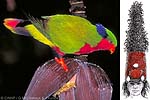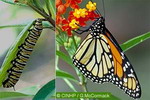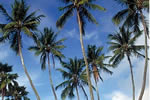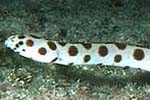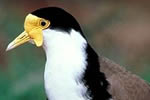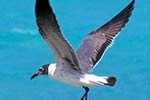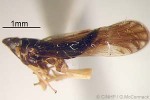Welcome to the Cook Islands Biodiversity Website
This website has been developing since March 2003. The Cook Islands Natural Heritage Trust gratefully
acknowledges those who have made the website possible, and gives a special
meitaki ma‘ata to the
Bishop Museum for hosting the website.
By Gerald McCormack (posted 6/11/2007)
A PDF article. Part ONE "The disease and the mosquitoes" provides information on the illness, the viruses, the mosquitoes, the epidemics on Rarotonga to October 2007, and how epidemics start and finish. Part TWO "Managing dengue-spreading mosquitoes" provides information on controlling larvae and adults. The use of Reslin, a pyrethroid insecticide, has been much debated. Information is provided on pyrethroid toxicity and carcinogenicity, before the health and environment threats of using Reslin as a ULV spray are evaluated.T
Read Full Article | View All Articles
By Gerald McCormack (posted 5/08/2006)
Introduction
It is planned to reintroduce the endangered Rimatara Lorikeet (‘Ura, Vini kuhlii) to Ātiu in the Cook Islands from Rimatara in French Polynesia in July 2007 to establish a reserve population. The programme is being implemented by four organisations: the Cook Islands Natural Heritage Trust (CINHT), an agency of the Cook Islands government; Te Ipukarea Society (TIS), the Cook Islands affiliate of BirdLife International; the Ornithological Society of Polynesia (MANU), the French Polynesia affiliate of BirdLife International; and Zoological Society of San Diego (San Diego Zoo).
Read Full Article | View All Articles
By Gerald McCormack (posted 29/06/2006)
In the CI News (13 May) Sue Ngatokorua described a new bird on Mangaia, and the author suggested it might be a Chestnut-breasted Mannikin. In late May Peter Ngatokorua, who provided the original information for the news article, took Ian Karika and the author to see the birds in Vaitate swamp, and they were confirmed as Chestnut-breasted Mannikins. Groups of up to 30 were seen, and the population might be near 100.
Read Full Article | View All Articles
By Gerald McCormack (posted 11/03/2006)
The Cook Islands Biodiversity Database on this website was presented as a case study at the 8th Conference of the Parties to the CBD (Curitiba, Brazil, 20-31 March 2006). It was presented in relation to the CBD's proposed Island Biodiversity programme of work, and its Global Taxonomic Initiative (GTI).
Read Full Article | View All Articles
By Gerald McCormack (posted 7/12/2005)
Our largest native butterfly is the Monarch Butterfly (Pepe Renga), which is present on all the Southern Group islands. It is orange and black, with a wingspan to 10cm. It is usually seen near the Red Cottonweed (Tirika, meaning 'silk'), a wayside weed. The adult sucks nectar from a variety of flowers, while the caterpillar requires a plant in the milkweed family, such as Red Cottonweed (aka Butterfly Weed, Bloodflower). The caterpillars grow to 5cm in length, and are covered with narrow yellow, black, and white bands.
Read Full Article | View All Articles
By Gerald McCormack (posted 4/12/2005)
On Rarotonga it is sometimes claimed that the seven palms east of the Avarua roundabout grew from one seednut. On Aitutaki it is claimed that the six palms at the Visitor Centre grew from one seednut. Are these claims fact or fiction?
Read Full Article | View All Articles
By Gerald McCormack (posted 3/10/2005)
Inshore sea-snakes are common on and around the reefs of Fiji, Samoa, Tonga and Niue, but have never been recorded in the Cook Islands. The snake-like creatures in our lagoons are scaleless fish in the Snake-eel Family.
Read Full Article | View All Articles
By Gerald McCormack (posted 25/09/2005)
Is it true that hermit-crabs develop into Coconut Crabs?
The Coconut Crab (Birgus latro) is the world's largest land-crab, often reaching 5kg. They take 7-12 years to reach sexual maturity, and can live more than 50 years. They are nocturnal omnivores, with a preference for coconut meat. Traditional names for large Coconut Crabs include: Unga, Unga Kaveu, Ūngākave‘u, Kaveu, Unga Koveu, and Unga Puku‘ara. Names for smaller ones include Toromimi and Unga ‘Onu.
Read Full Article | View All Articles
By Gerald McCormack (posted 25/09/2005)
During November and December several people reported an unusual bird on Rarotonga and Aitutaki. What was it, and did it come from Alaska?
Migrants and vagrants
A migrant bird is one that visits each year for a season. The Pacific Golden-Plover (Tōrea) is a migrant that arrives here each year during October and November from Alaska. During our summer it is common on grassed areas and on the shore. It is a brown bird with black speckles.
Read Full Article | View All Articles
By Gerald McCormack (posted 25/09/2005)
Laughing Gulls
Seagulls are such common seabirds in New Zealand, Australia and America that it always comes as a surprise for visitors to find no seagulls in the Cook Islands, assuming they ignore the two plastic ones at the Deli in Foodland. Although seagulls seem like the most adaptable scavengers we can imagine, they have not managed to establish themselves on the islands of tropical Polynesia. The nearest island to have resident seagulls is New Caledonia.
Read Full Article | View All Articles
Search Engine A-Z list
This is a simple A-to-Z list of all species for search engines to index.
 Dengue and Mosquito Control on Rarotonga
Dengue and Mosquito Control on Rarotonga